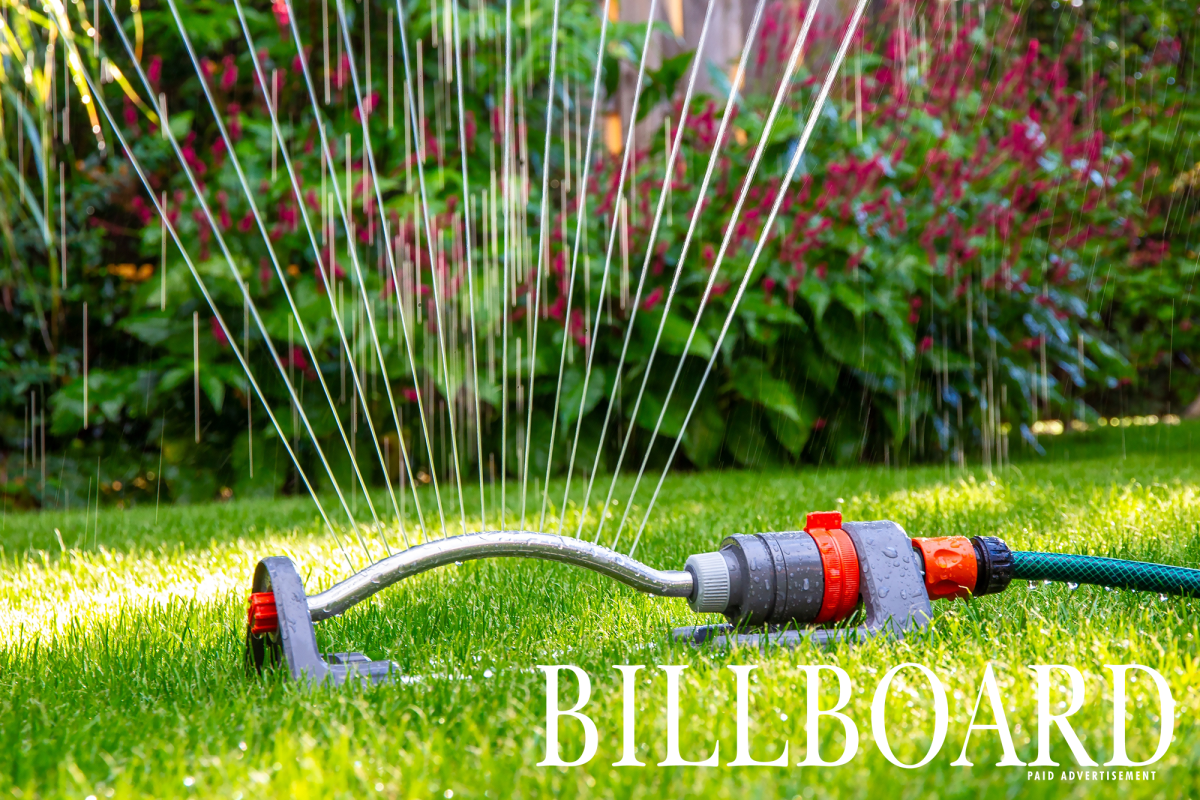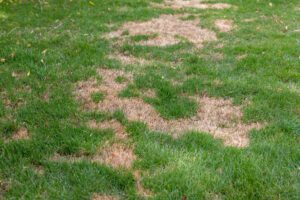HOW TO DEAL WITH DROUGHT STRESS IN YOUR LAWN!

Skip explains that summer can be a challenging time to keep a lawn healthy! In addition to a number of pests and diseases being active, lawns can also suffer drought stress when we go for several days at a time without rain! Under such conditions, lawns can suffer drought stress even with the irrigation system running on a regular basis because gaps in coverage or deficiencies in the system will cause dry area in the lawn.
“Just because the lawn is getting wet, doesn’t mean it is getting enough water to keep it healthy.” According to Skip, areas of the lawn that are getting too little water typically always struggle year in and year out and never look as full and lush as the rest of the lawn.

If you suspect areas of your lawn might be suffering from inadequate irrigation coverage, Skip suggests the best way to measure how much water the irrigation system is putting on different areas of the lawn is to place several catch cups of equal size around the yard and check the amount of water in each cup after the lawn is watered. This will reveal the areas of the lawn that are not getting as much water as other areas.
“Each irrigation cycle should provide about 1/2” of water over the lawn,” Skip says. “If there’s only 1/4 inch in some cups and 1/2 inch in others, it will be obvious some areas are getting twice the amount of water as others.”
Not only is it important that the lawn get an even distribution of water but there are many other factors can affect how much water the grass needs. An area of the lawn that is in direct sun light all day will need more water than a shaded area. Lawns that are on or close to the beach need more water because of the constant wind and the fact that beach sand has less water holding ability than soil further inland.
Skip explains the best way to recognize drought stress in your lawn before it’s too late for the grass to recover.
“First, the individual grass blades will begin to fold together in a V. When the V is completely closed, the grass is in desperate need of water! The grass will also appear dull and grayish in color. Finally, the grass will lose its resilience when stepped on and you can see your footprints when walking across the lawn.”

So if your lawn is in drought stress, here are 5 things Skip suggests you can do to get more water to your yard and nurse it through dry periods if it is struggling.
1. Run each irrigation zone longer. It’s better for the lawn if you run the system longer on each zone instead of more frequently. Running the system for a longer time will get the water deeper in the ground where it will not evaporate as quickly.
2. Increase the nozzle size on your sprinkler heads. Most sprinkler heads have interchangeable nozzles that regulate the gallons per minute the head puts out. Increasing the size of the nozzle will put more water on the lawn during the time it runs.
3. Add more sprinkler heads. You can add more heads to a zone as long as you don’t have so many that it affects the pressure of the zone. One way to determine if adding a head will affect pressure is to turn on the spigot on the top of the pump while the zone is running and observe the pressure coming out of the heads. If there is no pressure loss on the zone with the spigot open, then it will handle another head without a problem.
4. Adjust sprinkler patterns. Sometimes all that is needed to correct a dry area is a simple adjustment. Make sure the spray patterns are going far enough and the heads are angled correctly.
5. Run the irrigation system more frequently. According to Skip, it’s usually better to limit the frequency of irrigation because grass that is constantly wet can easily develop disease activity.
However, in drought conditions, the main goal is to keep the grass alive no matter how often you have to water. When the drought eases up, reduce the frequency of your irrigation.
Are you having problems keeping your lawn healthy? Call or text Father and Son Pest and Lawn Solutions today for a free lawn consultation! 850-240-7935. You can also visit their website at www.fatherandsonlandscape.com.







